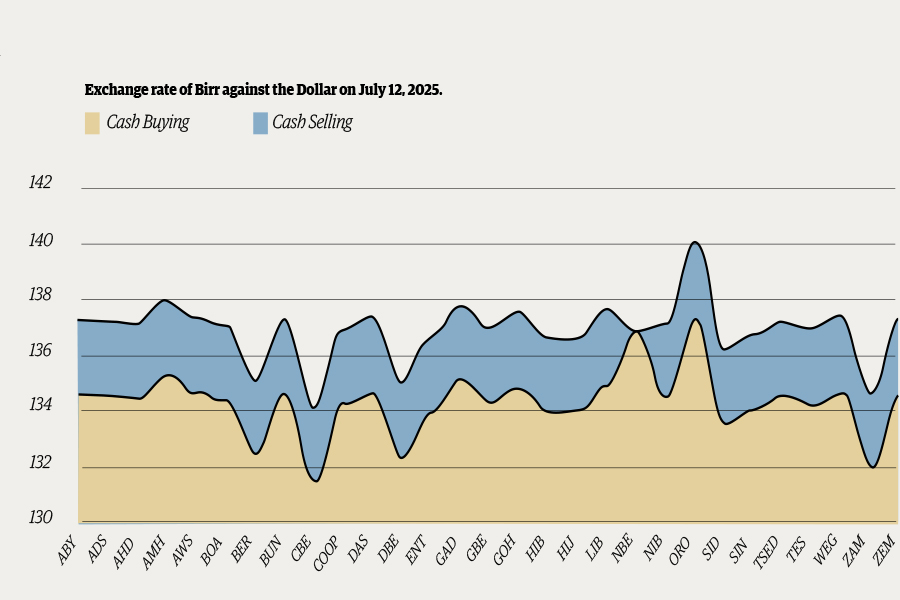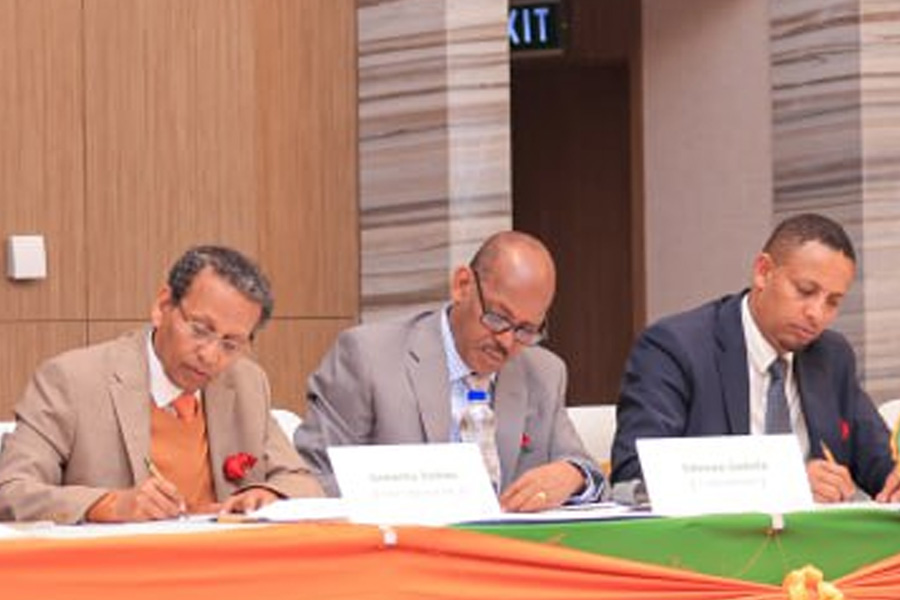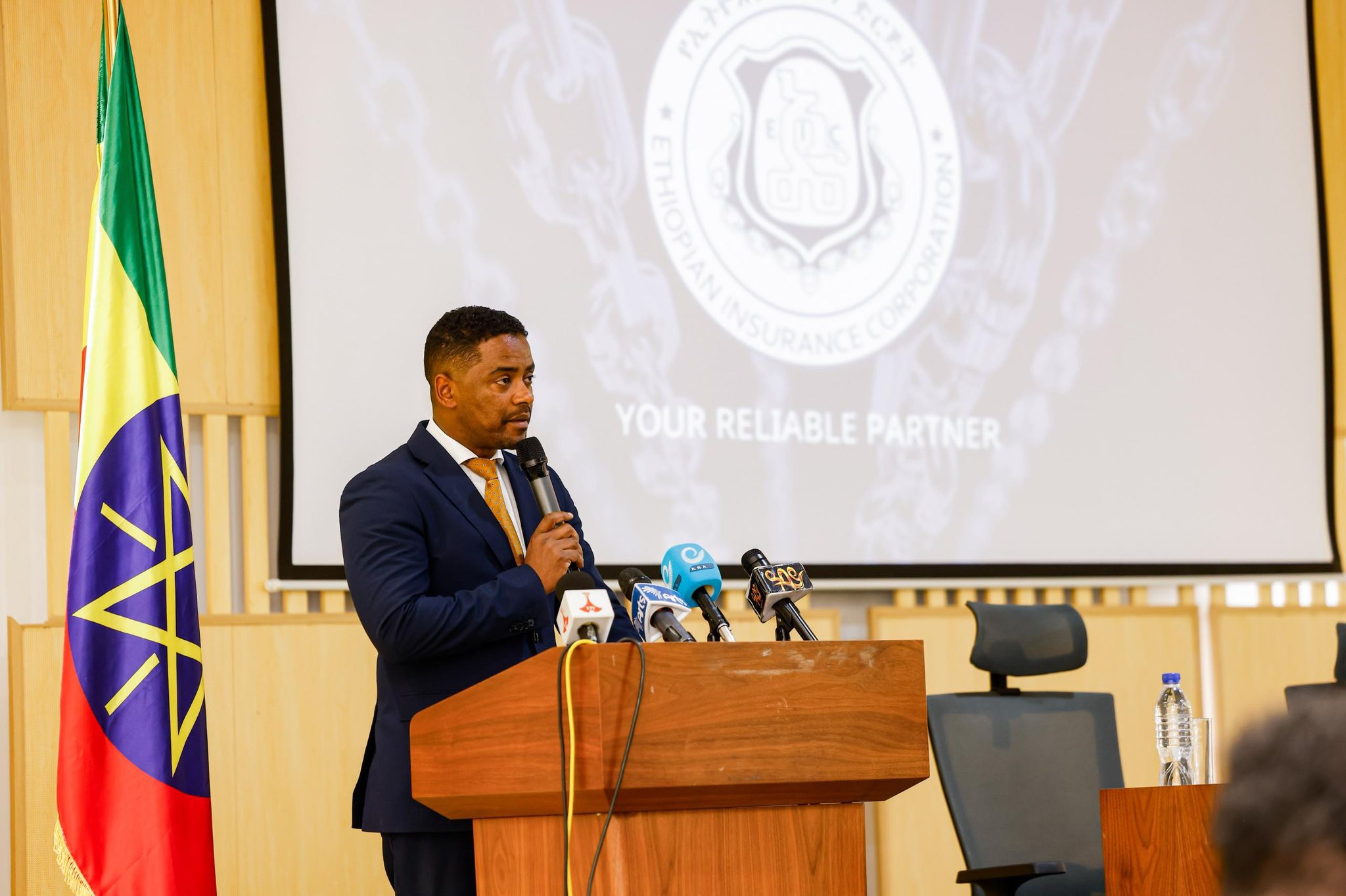
Money Market Watch | Jul 13,2025
A tarmac road on the hill from the CMC roundabout to the Wossen roundabout displays a giant blue and red neon sign. The Axon Stroke & Spine Center is bound by the American Medical and Samaritan Surgical Centers, sister companies providing inpatient and outpatient medical and surgical speciality services.
The two-storey chained premises give off a complete medical centre vibe. Outpatients and attendants were scattered in the waiting area while some stretched their legs with support. Doctors were busy responding to calls from patients that wanted to schedule appointments. Nurses on the first floor were changing guards, handing their patients to night duty.
The energetic appearance on the ground and the first floor does not do justice to what goes on in the second-floor operation room.
Around 5pm last week, a 52-year-old female patient arrived at the emergency unit. She suffered a sudden onset of left-sided body weakness. Doctors suspected it happened after the patient discontinued her blood thinner medication a few days before the incident. She could not speak or lift the left side of her arms or legs. The CT scan revealed a blood clot on the right side of the blood vessel in her brain.
The blood flow to the right brain was blocked at a certain point, causing weakness on the reverse side.
The human brain needs constant blood flow. A blood clot stops the flow of oxygen and glucose, causing brain tissue death. A stroke happens when the blood flow to the brain is blocked, otherwise known as ischemic stroke or when blood vessels in the brain burst and bleed, known as hemorrhagic stroke. Ischemic stroke is the most common type, accounting for nearly 85pc of strokes, said Wondwossen G. Amanuel (MD), the world-renowned neurologist and stroke sub-specialist (neuro interventionalist). He has been practising from his centre in Harlingen, Texas, after graduating from George Washington University in neurology in 2013.
Immediately, the patient was rushed to the operation room (Cath Lab) to remove the clot, a procedure known as mechanical thrombectomy.
Thrombolytic therapy is the immediate treatment choice after the onset of a stroke. Clearing the blood clot reduces the effects. Without treatment, a blood clot in the brain is more likely to lead to severe brain damage. To get this treatment, patients from Ethiopia used to go to countries such as Kenya or South Africa. Besides the ability to make financial arrangements in a time-constrained situation, getting exposed to decreased pressures on air had its own disadvantages.
The patient admitted last week to Axon Centre was lucky. Wondwossen is the only qualified medical professional in the country to remove a blood clot with this procedure. Taking advantage of her weak side, he placed a catheter into the blood vessel through the left groin while monitoring the procedure on a screen in front of him. The passage of blood was magnified on the screen as black in contrast with the blank blood-deprived areas, identifying the point of the blockade.
The catheter, made of a wire mesh, travelled up to the blocked area. This happened in arteries with less than a three-millimetre diameter, smaller than the size of calligraphy markers.
After a careful journey, it finally reached the blocked area in the brain. The wire closed around the clot and pulled it out of the blood vessel. As the clot disappeared from the screen, the blood flow was restored with a finger snap. The blank blood-deprived areas on the screen lit up as a Christmas tree would brighten after its switch was on.
This incredible procedure took close to two hours. It usually takes less time, depending on the difficulty of the case.
As the patient was referred from another hospital, it took nearly nine hours from the presentation until she arrived at the stroke centre. For the specialist at the Centre, timing is a crucial element in determining the outcome. Acute stroke cases should be treated within 24 hours. The longer patients take to get to treatment centres, the further the tissue damage in the brain.
"Patients getting treatment within six hours of an incident have a better chance of full recovery," Wondwossen told Fortune.
Two large blood vessels along both sides of the neck supply blood from the heart to the brain. These vessels get smaller to tiny bits supplying oxygen and nutrients to the deepest parts of the brain. The position of blood clots determines the signs and symptoms at the time of presentation, according to Wondwossen. Sudden paralysis or weakness on one side of the body is noticed when blood flow is affected from one side, as the 52-year-old patient suffered.
Some patients may not be fortunate. When a major blood supply without any tributaries is blocked, patients experience loss of consciousness.
It happened to a 47-year-old male patient on vacation from the Middle East. He has a known cardiac disease history but no medication adherence. He was with his wife and children when he suddenly lost consciousness; he was referred to the stroke centre in about six hours. Upon referral, he was hooked up to machines to help him breathe and was diagnosed with a blood clot at the back of the brain.
Wondwossen described it as one of the deadliest phenomena known as "basilar artery occlusion."
Three days after the procedure, the patient recovered with impressive command. He remembered his wife and knew his name. He even gave Wondwossen a thumbs-up as they finished their rounds.
"He would not have survived if Wondwossen was not here," said Akeza Teame (MD), a medical director of American Medical Center, with more than two decades of experience in internal medicine, sub-specialising in infectious disease.
Outpatients and attendants dispensed in the ground-floor waiting area of Axon Stroke & Spine Center.
The prevalence of stroke had risen tremendously from when Wondwossen last remembered it. Ironically, the attention it received was negligible, despite its enormous impact. A nationwide study conducted to discover deaths caused by stroke is unavailable, but clinical reports suggest that stroke cases and related deaths are on the rise.
"The sedentary lifestyle and significant rise in stroke risk factors have contributed a lot," said Wondwossen.
Three decades ago, the burden of stroke was unclear. Recently published clinical reports, however, put stroke as the second deadliest disease in the country, according to Fikru Tsehayneh (MD), head of the neurology department at Tikur Anbessa Specialised Hospital. It is detected in over half of the hospital patients visiting.
Stroke has become the leading cause of death worldwide, with a 5.5 million annual mortality rate. It is severe in developing countries as they cannot prevent it effectively or curb the consequences. A report by the World Health Organisation (WHO) released in 2014 showed that five percent of the nearly 700,000 deaths recorded in Ethiopia occurred due to stroke.
Witnessing this dramatic rise and lack of advanced care, Wondwossen's interest in opening an impactful treatment centre with cutting-edge neurological care was conceived. The delayed response from the authorities was frustrating, but he has managed to make his vision a reality through private partnerships. Looking back, he is thankful to get involved with like-minded colleagues such as Akeza, making an enormous impact in the city one thrombectomy at a time.
An Ethiopian-American, Akeza studied medicine at the University of Kansas before moving back from the United States in the mid-2000s, co-founding the Saint Yared General Hospital, near the Century Mall, on the road to Ayat Village. Later, he established the American Medical Center (AMC) and co-founded Samaritan Surgical Center, which now houses the stroke centre.
The two medical doctors met six years ago when Wondwossen was looking for ways to open a stroke centre in Addis Abeba.
Axon Stroke & Spine Center was inaugurated by Health Minister Lia Tadesse in October this year after consuming an investment of over 130 million Br.
However, it faces challenges from a lack of awareness of the prevalence of stroke even among medical professionals. Patients hesitate to go to hospitals, rather taking alternative and traditional medicine as their first choice. Hospital medical professionals are also unaware of this groundbreaking procedure's availability, causing referral delays.
The limited space where the Centre is housed is also another challenge. The stroke centre can admit only 20 patients at a time. They have agreed with Addis Abeba University to train neurosurgeons and neurologists.
"We're doing what we can with the limited space," said Akeza.
They had asked the government for larger space to no avail.
Yared Zenebe is a sub-specialist in cognitive neurology and an assistant professor in the department of neurology at Addis Abeba University's College of Health Science. He believes that the government has forgotten about stroke care. There are no medical centres in the country facilitating proper stroke care. The unit at Tikur Anbessa Specialised Hospital suffers from inadequate equipment availability.
"The unit was formed with medical professionals' raised funds," he told Fortune.
Despite constrained space, the Centre is equipped with an artificial intelligence-enabled Cath Lab, performing invasive image-guided head, neck and spine procedures. The managers held off the promotion of the Centre to ensure in-house services were in order.
"Axon is now fully equipped with the necessary resources to treat stroke patients," said Wondwossen.
Last week, the 52-year-old patient admitted to Axon Centre showed tremendous progress on her third day. The weakness on her left side had disappeared. She was on her way to a complete recovery taking physical and speech therapies. Full recovery from a stroke may take from three to six months.
Her son, Abebaw Nigussie, was ecstatic.
"My mother wouldn't have been treated had the stroke happened a few months ago," he told Fortune. "I feel lucky."
PUBLISHED ON
Nov 12,2022 [ VOL
23 , NO
1176]

Money Market Watch | Jul 13,2025

Radar | Dec 15,2024

Fortune News | Jan 14,2023

Exclusive Interviews | Jan 24,2023

Life Matters | Mar 28,2020

Films Review | Sep 10,2022

Fortune News | Aug 30,2025

Fortune News | Jul 07,2024

Delicate Number | Apr 27,2024

Fortune News | Feb 14,2024

Dec 22 , 2024 . By TIZITA SHEWAFERAW
Charged with transforming colossal state-owned enterprises into modern and competitiv...

Aug 18 , 2024 . By AKSAH ITALO
Although predictable Yonas Zerihun's job in the ride-hailing service is not immune to...

Jul 28 , 2024 . By TIZITA SHEWAFERAW
Unhabitual, perhaps too many, Samuel Gebreyohannes, 38, used to occasionally enjoy a couple of beers at breakfast. However, he recently swit...

Jul 13 , 2024 . By AKSAH ITALO
Investors who rely on tractors, trucks, and field vehicles for commuting, transporting commodities, and f...

Nov 1 , 2025
The National Bank of Ethiopia (NBE) issued a statement two weeks ago that appeared to...

Oct 25 , 2025
The regulatory machinery is on overdrive. In only two years, no fewer than 35 new pro...

Oct 18 , 2025
The political establishment, notably the ruling party and its top brass, has become p...

Oct 11 , 2025
Ladislas Farago, a roving Associated Press (AP) correspondent, arrived in Ethiopia in...